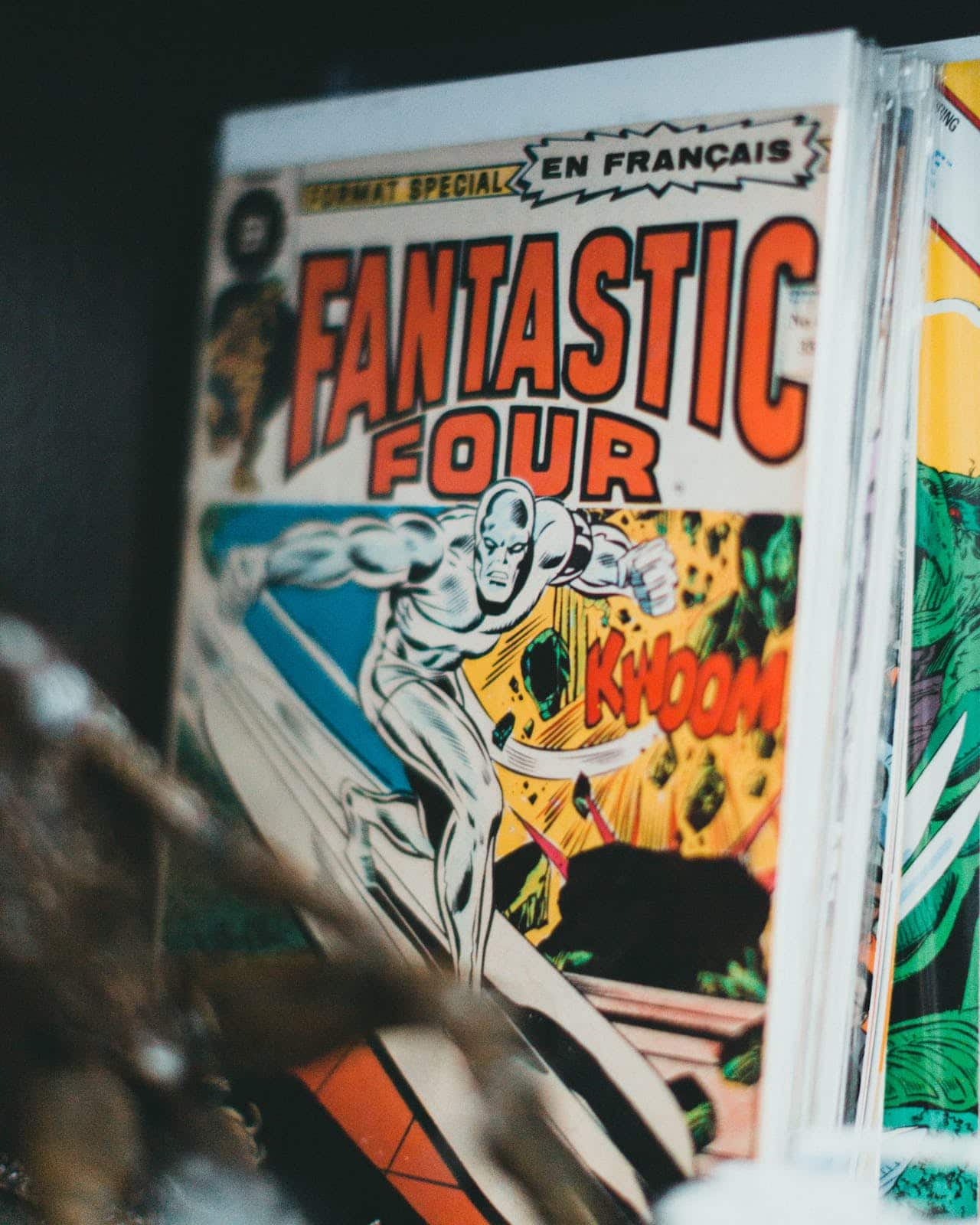For comic book enthusiasts, nothing is as thrilling as owning a piece of history. The allure of rare comic books is not just about the physical item but also their legacy, the stories they introduced, and their cultural impact over the decades.
These comics are not merely publications but treasured artifacts that every collector dreams of. In this journey through the annals of comic history, we unveil the top 20 rare comic books that have become legendary in collector circles.
IMAGE: PEXELS
1. “Action Comics #1” (1938):
This monumental issue marked the debut of Superman, the world’s first superhero, setting the stage for the entire superhero genre that followed. The character of Superman brought a new sense of hope during tough times, symbolizing justice and moral values. With only a few copies remaining in mint condition, it’s incredibly prized, often fetching millions in auctions. Its historical and cultural significance, combined with its rarity, cements its place at the pinnacle of comic book lore.
2. “Detective Comics #27” (1939):
Introducing Batman to the world, this comic book represents the darker, more complex superhero archetype. Unlike other heroes, Batman possesses no superpowers, and his debut marked a shift towards more intricate storytelling in comics, focusing on psychological depth and realism. The character’s lasting global impact, coupled with the comic’s age and scarcity, makes this issue a collector’s dream.
3. “Amazing Fantasy #15” (1962):
This comic book is treasured for unveiling Spider-Man, one of the most relatable superheroes, dealing with everyday issues that resonated with readers. Spider-Man’s enduring popularity across various media, from comics to blockbuster films, contributes to this issue’s desirability. The backstory of Peter Parker, a high school student acquiring spider-like abilities, revolutionized superhero narratives, emphasizing personal struggle and responsibility.
4. “Marvel Comics #1” (1939):
As the comic that introduced the Human Torch (and not the Fantastic Four member), its historical value is unparalleled. It was the inception of the Marvel Universe, leading to a sprawling, interconnected comic book world. The Human Torch was one of the first superheroes to deal with personal issues, setting a precedent for character-driven stories in the genre. Its rarity and foundational status in the Marvel saga make it a sought-after collector’s item.
5. “Superman #1” (1939):
Building on Superman’s story from “Action Comics #1,” this was the first comic book dedicated entirely to a single superhero, exploring his origin story and early life. It expanded the character’s lore, adding depth and detail that captivated readers. This issue’s historical significance, being the first character-centric superhero comic, along with its age, contributes to its high value and desirability among collectors.
6. “Batman #1” (1940):
This landmark issue features Batman’s first solo comic book and introduces iconic characters like the Joker and Catwoman. It set the stage for Batman’s evolution into a complex, brooding character and marked the beginning of Gotham’s expansive, intricate universe. The comic’s introduction of enduring villains, essential to the Batman mythology, adds immense value for collectors.
7. “All-American Comics #16” (1940):
This issue is renowned for debuting Green Lantern, a character contributing to the mystical and cosmic side of DC’s universe. Unlike heroes reliant on physical strength, Green Lantern’s power comes from his ring, introducing a unique, imaginative concept. The character’s longevity, spanning multiple incarnations in comics and media, highlights this issue’s importance for collectors.
8. “X-Men #1” (1963):
The introduction of the X-Men, a group of mutants advocating for peace and equality, was groundbreaking. It paralleled real-world issues like racism and prejudice, bringing depth and social commentary to superhero stories. Each character, from Cyclops to Jean Grey, was complex and relatable, making this issue a significant piece of Marvel’s history and a top item for collectors.
9. “Tales of Suspense #39” (1963):
This comic marks Iron Man’s debut, introducing a superhero whose power comes from his intellect and technological innovations. The character of Tony Stark, a flawed but brilliant inventor, resonated with readers, and his journey of redemption and self-discovery began in this issue. Iron Man’s central role in the Marvel Cinematic Universe boosts this comic’s appeal and market value.
10. “Wonder Woman #1” (1942):
As the premiere issue dedicated to Wonder Woman, it’s a symbol of female empowerment. Wonder Woman was one of the first female superheroes, representing love, peace, and equality. Her character broke stereotypes and inspired readers, making this comic a historic artifact. Its status as a pioneering work of feminist iconography makes it extremely valuable.
11. “The Incredible Hulk #1” (1962):
Presenting the origin of the Hulk, this comic introduced a new kind of hero — one battling inner turmoil. Bruce Banner’s transformation into the Hulk reflected themes of duality and anger, diverging from traditional heroic traits. The Hulk’s cultural impact, including numerous TV shows and movies, enhances this issue’s collectible status.
12. “Captain America Comics #1” (1941):
Debuting Captain America, this comic is iconic, featuring the hero punching Hitler. It was a bold political statement pre-U.S. involvement in WWII, showcasing the character’s symbolic value. Captain America’s embodiment of American values and his recent cinematic portrayal amplify the importance and worth of this issue for collectors.
13. “Amazing Spider-Man #1” (1963):
Spider-Man’s first standalone comic delved deeper into his world, exploring themes like personal loss and financial struggles. It solidified the character’s place in readers’ hearts, setting the stage for Spider-Man’s evolution into a cultural icon. The comic’s significance in expanding the beloved character’s universe makes it highly collectible.
14. “Flash Comics #1” (1940):
Introducing the original Flash, Jay Garrick, this comic marked the beginning of speedsters in superhero lore. The Flash’s science-fiction-based powers and timeless appeal across different iterations make this issue a valuable piece of comic history, cherished by fans and collectors alike.
15. “Fantastic Four #1” (1961):
The debut of the Fantastic Four initiated a new era of superheroes with complex personalities and family dynamics. Their stories involved cosmic adventures, scientific exploration, and personal drama, offering a more nuanced approach to superhero narratives. This comic’s introduction of Marvel’s ‘First Family’ and their contribution to the broader Marvel Universe attributes to its collectible status.
16. “Journey into Mystery #83” (1962):
This comic brought Norse mythology into superhero comics with Thor’s introduction. The blending of myth with modern heroics was innovative, offering readers a character who was both a god and a man. Thor’s subsequent popularity in comics and film underscores this issue’s value.
17. “The Avengers #1” (1963):
Uniting several major characters, this issue set the precedent for superhero teams. The Avengers became central to Marvel’s narrative arc, representing a collaborative fight against threats too big for one hero. The comic’s significance, bolstered by the blockbuster movie franchise, makes it a prized collector’s item.
18. “Detective Comics #38” (1940):
This comic introduced Robin, setting a trend for superhero sidekicks and altering Batman’s storyline to include a protégé, adding layers to his persona. Robin’s character allowed younger readers to see themselves in the narrative, enhancing the comic’s appeal and historical value.
19. “The Brave and the Bold #28” (1960):
The Justice League’s debut marked the assembly of DC’s most powerful heroes, creating a template for future superhero alliances. The concept of individual heroes uniting to confront larger threats was a novel idea, influencing many subsequent narratives in the genre.
20. “Iron Man #55” (1973):
Introducing Thanos, this comic gained prominence with the character’s role in the Avengers movies. Thanos became one of Marvel’s most formidable villains, and his quest for the Infinity Stones has been central to the storyline of the Marvel Universe. The character’s impact on modern pop culture significantly increases this issue’s collectible value.
Conclusion
These rare comics (ad) are more than vintage items; they’re pieces of history that helped shape global pop culture. Each issue represents a pivotal moment in the evolution of comic books, introducing characters and stories that would transcend the pages they were printed on. For collectors, these comics are the Holy Grail, sought after not just for their monetary value but for their undeniable place in the annals of superhero history.
Frequently Asked Questions
Q1: What makes a comic book valuable?
A1: Several factors contribute to a comic book’s value, including its condition, rarity, significance (first appearances, origin stories, etc.), and demand among collectors.
Q2: How can I determine the value of my comic books?
A2: Professional grading by a reputable service, checking price guides, and comparing recent sales of similar issues can help determine a comic’s market value.
Q3: Are modern comic books worth collecting?
A3: While older comics are often more valuable, modern comics can be collectible, especially variant covers, limited editions, or issues with significant events or first appearances.
Q4: How should I store my rare comic books?
A4: To preserve their condition, store comics in a cool, dry place, use acid-free backing boards and comic bags, and consider using comic book boxes for added protection. Avoid exposure to direct sunlight.
IMAGE: PEXELS
As an Amazon Associate, I earn from qualifying purchases
If you are interested in even more lifestyle-related articles and information from us here at Notilizer, then we have a lot to choose from.


COMMENTS